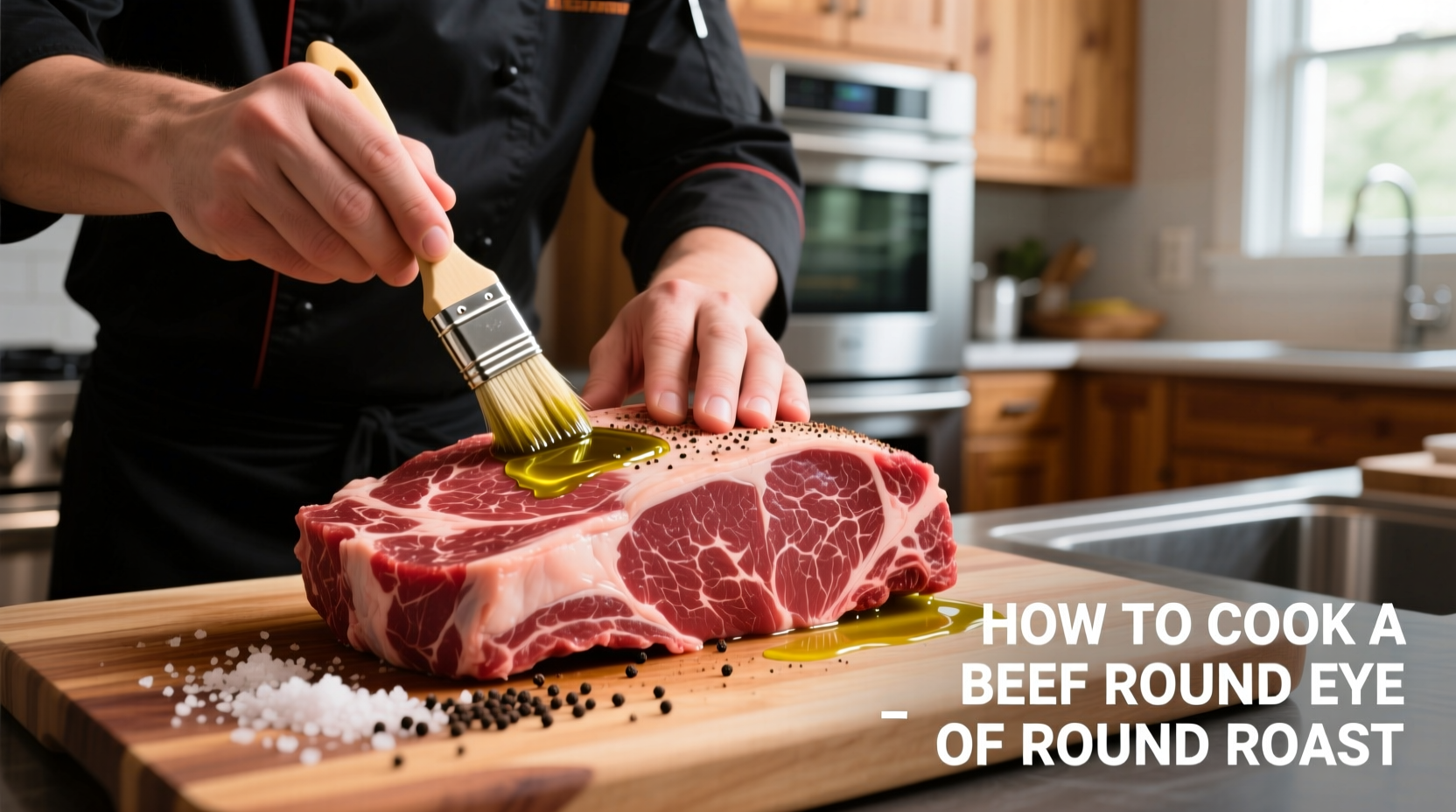Mastering the Eye of Round Roast: Your Foolproof Guide
Eye of round roast often gets a bad reputation for being tough, but when cooked properly, this affordable cut delivers impressive results. As a lean, boneless cut from the rear leg muscle, it requires specific techniques to transform its naturally firm texture into a tender, flavorful centerpiece. Professional chefs achieve consistent success by controlling three critical factors: temperature precision, resting time, and slicing technique.
Why Eye of Round Challenges Home Cooks
This cut contains minimal marbling compared to premium roasts like ribeye or sirloin. According to the American Meat Science Association, eye of round has just 4.8g of fat per 3-ounce serving, making it one of the leanest beef options. Without proper technique, the lack of fat leads to dryness during cooking. The muscle fibers run parallel through the entire cut, creating a uniform grain pattern that demands precise slicing for tenderness.
| Beef Cut | Fat Content (per 3oz) | Recommended Cooking Method |
|---|---|---|
| Eye of Round | 4.8g | Slow roast to medium-rare |
| Ribeye | 14.2g | High-heat sear then roast |
| Sirloin | 7.1g | Medium heat roast |
The Essential Preparation Timeline
Follow this critical sequence for optimal results. The USDA Food Safety and Inspection Service recommends allowing sufficient time for each stage to ensure food safety and texture development:
- 24-48 hours before cooking: Apply dry brine (1T salt per 5lbs meat) and refrigerate uncovered
- 3-4 hours before cooking: Remove from refrigerator to reach room temperature
- Preheat oven: Set to 275°F (135°C) - critical low-and-slow temperature
- Cooking time: Approximately 20-25 minutes per pound until 130-135°F internal temperature
- Mandatory rest: 20 minutes minimum before slicing
Temperature Control: Your Secret Weapon
Invest in an instant-read thermometer - it's non-negotiable for this cut. The National Cattlemen's Beef Association confirms that eye of round reaches optimal tenderness at 130-135°F (medium-rare). Exceeding 140°F triggers rapid moisture loss in this lean cut. Here's what happens at different temperatures:
- 120-125°F: Rare - may be too chewy for some palates
- 130-135°F: Medium-rare - ideal balance of tenderness and safety
- 140°F+: Rapid moisture loss begins - avoid at all costs

Proven Cooking Method: The Low-and-Slow Approach
Forget high-heat roasting methods - they'll ruin this delicate cut. Professional kitchens use this reliable technique:
- Pat roast dry and apply seasoning (salt, pepper, garlic powder)
- Place on rack in roasting pan with 1 cup beef broth in bottom
- Insert thermometer probe and roast at 275°F until 130-135°F internal temp
- Remove when 5°F below target temperature (carryover cooking will raise temp)
- Rest covered loosely with foil for 20 minutes minimum
Slicing Technique: Where Most Home Cooks Fail
Improper slicing can undo all your careful cooking. The muscle fibers run lengthwise through the entire roast. Cutting with the grain creates long, tough strands. Always slice against the grain in ¼-inch thick slices. For maximum tenderness, angle your knife 45 degrees while slicing.
Troubleshooting Common Issues
Dry results: Usually caused by exceeding 135°F internal temperature or insufficient resting time. Solution: Use thermometer religiously and never skip the 20-minute rest.
Tough texture: Typically from slicing with the grain or inadequate dry brining. Solution: Always slice perpendicular to muscle fibers and apply dry brine 24 hours ahead.
Lack of flavor: Eye of round needs aggressive seasoning. Solution: Create a garlic-herb paste with olive oil and rub under surface fat layer.
When This Method Works Best (And When It Doesn't)
This technique shines for roasts between 2-4 pounds. Larger roasts become challenging to cook evenly. It's ideal for special occasions where presentation matters. For weeknight meals, consider slicing the roast thin and using it for stir-fries or sandwiches instead of roasting whole. Avoid using this method for already pre-tenderized cuts like top round, which require different approaches.
Serving Suggestions That Elevate Your Roast
Pair with robust sides that complement the lean beef:
- Horseradish cream sauce (mix sour cream, prepared horseradish, lemon zest)
- Roasted root vegetables (carrots, parsnips, beets)
- Red wine reduction (simmer 1 cup red wine with ½ cup beef broth until reduced by half)
Leftovers transform beautifully into roast beef sandwiches or steak salad when sliced thin and reheated properly in broth.











 浙公网安备
33010002000092号
浙公网安备
33010002000092号 浙B2-20120091-4
浙B2-20120091-4